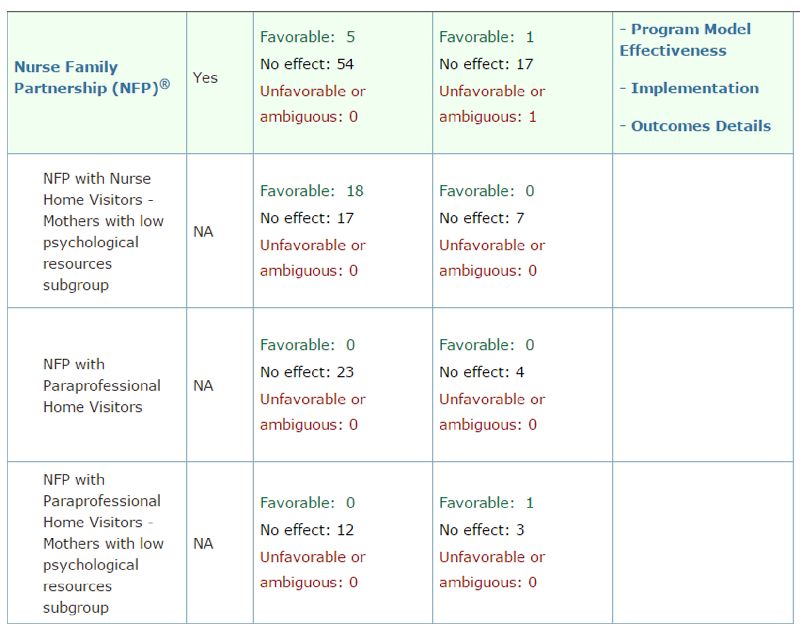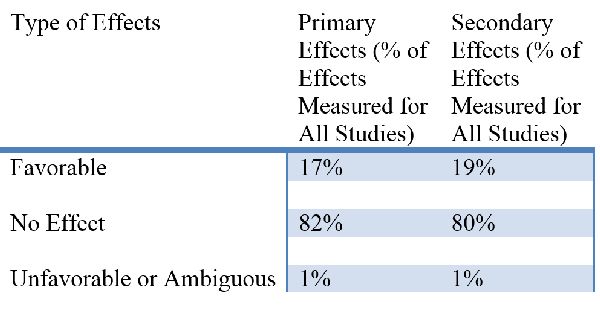
First, the good news: even think tanks generally aligned with the education establishment in supporting federal involvement in education, particularly early childhood education, are starting to admit the stark truth of the longstanding and stunning lack of evidence for preschool as an effective means to close racial and economic achievement gaps and improve life outcomes.
Dale Farran is one of the co-authors of the 2015 Vanderbilt University study showing not only government preschool’s oft-seen fadeout of benefits to children and society but also the increasingly frequent academic and emotional harm of these programs. She recently admitted in a Brookings Institution white paper that despite 50 years of research, the early childhood research is too small to support: 1) “the proposition that expanding pre-K will improve later achievement for children from low-income families;” 2)“the presumption that solid research exists to guide the content and structure of pre-K programs;” or 3) evidence “about which skills and dispositions are most important to effect in pre-K and what instructional practices would affect them.”
Farran also rightly discusses the sad truth that preschool quality measures have “no empirical validity.” She goes on to say, “Despite being included in national and state policies and used to hold pre-K providers accountable, none of the widely used measures of classroom and center quality relates strongly, if at all, to child growth on the school readiness outcomes on which most pre-K programs are focused.”
Of course, it didn’t take long for some nanny-state advocates disguised as researchers at Brookings to try to shoot down Farran’s well-researched paper. These Brookings responders ignored much research showing government preschool programs’ practically insignificant improvements, later fadeout of beneficial effect, the academic and emotional harm (including in Canada), and researchers’ and advocates’ frank agreement with Farran that labeling preschool programs as “high quality” does not connect to any evidence of improved lives or academic performance, including in studies of Head Start.
Look: The Evidence Just Isn’t There
Although more conservative, the American Enterprise Institute also seems to favor early childhood education more from the big business perspective that supports government-monitored childcare programs. In a recent white paper titled “Does Pre-K Work?” Katharine Stevens and Elizabeth English nonetheless take a similarly cautious view as Farran, and definitely a more-research based view than the Brookings crowd that responded to her. In this paper, they review the results of ten highly studied programs.
According to the authors, five of these programs are school-based: Abbott, Boston, Chicago (CPC), Georgia, and Tennessee (TN). Five programs met the highest standard of a randomized, controlled trial: Abecedarian, CPC, Head Start, Perry, and Tennessee, with only the Tennessee program being school-based. They come to the conclusion that the child care and home visiting programs, which were part of Abecedarian, Perry, and the Nurse-Family Partnership (NFP), had the best long-term effects.

The authors then go on to do something for which they should be heartily commended and which is seldom done by pro-preschool/out-of-home childcare think tanks: discussing “the meaning of statistical versus practical significance.”
Statistical Significance Doesn’t Mean Policy Significance. While they are often conflated, there is a big difference between statistical significance and practical significance—and this distinction is crucial when using research to inform policy decisions…Researchers determine whether a result is statistically significant; policymakers assess how much a program moves the needle on an important social problem, whether outcomes justify the cost…
If imitation is the sincerest form of flattery, then I appreciate them using the same contrast I had made five years ago discussing the much-touted but not practically significant long-term outcomes of the CPC study by Arthur Reynolds, one of the programs their paper discusses: “Our analysis reveals statistically significant, but not practically important differences that really need to be examined as to whether they are practically significant and worth the cost and government expansion of preschool programs.”
Even the ‘Benefits’ Hardly Exist
The Associated Press noted at the time that the prospects for these youth, even after having gone through the program, were still “dismal,” with both experimental and control groups still only earning less than $12,000 per year and both groups having an approximately 50 percent arrest rate, while the treatment group’s rate was 6 percent lower. Other examples of these practically insignificant results include: 1) Less than a third of one year difference (or less than a semester) in the highest grade completed; 2) Only a 3.5 percent difference in attendance at a four-year college; and 3) “No differences were detected for degree completion, employment, or a combined measure.”
The AEI authors also brought up another major concern I cited in 2011: “Researchers do not know whether greater parental involvement was caused by the CPC preschool or whether more involved parents were more likely to send their children to CPC preschool in the first place. So it is not clear whether the most important factor in children’s longer-term outcomes was their participation in pre-K or the kind of parents they have.”
They did not, however, mention the lack of practically significant IQ outcomes with Abecedarian. Dr. John Bruer, in his 2002 book “The Myth of the First Three Years” noted the IQ improvement was only “approximately a 5 percent increase in measured intelligence, an increase hardly noticeable in the classroom or on the job.” He also noted that for the treatment group, despite having IQs four to five points higher than the children in the control group at ages 12 to 15, “the early enrichment did not result in these children reaching IQ levels comparable to middle-class children in the community, nor did they reach the national average IQ of 100.”
Home Visits Are Not the Answer
While I heartily concur with one of AEI’s concluding statements—“Our current knowledge is insufficient to justify a large expansion of pre-K as the best path forward”—the bad news is that their key recommendations include more research and promoting “voluntary” home visiting.
We already have plenty of research to demonstrate preschool’s failure. My compilation alone contains more than two dozen different studies showing no effect, fadeout of benefit, and academic or emotional harm. There is also much excellent similar analysis from Joy Pullmann, a Heartland Institute education research fellow; Jane Robbins of the American Principles Project; David Armor from the Cato Institute; and Lindsey Burke and Salim Furth at the Heritage Foundation.
AEI’s promotion of home visiting is even more alarming. Despite their contentions that parent-child programs like Perry, Abecedarian, and the NFP are the most effective early childhood programs, they fail to mention many significant problems. Besides the IQ issues discussed above, at least one study shows a decline in behavioral parameters for child participants in the Abecedarian program.
The Perry Preschool Project was a very small, unique, and difficult-to-scale program that has been consistently criticized over long periods for many methodological flaws, with the most noticeable one the same as discussed with the Chicago study: the program required significant parental involvement—a mother home during the day—making the experimental group very different from the control group.
Even home visiting programs like the NFP admit their own flaws in the realm of child development. A 2004 review by Olds and Robinson stated that children paraprofessionals visited regularly saw no effects on language, organization (executive functioning), emotional regulation, or behavior. Nurse-visited children had no statistically significant differences in “sensitive-responsive mother-child interaction, children’s emotional regulation, or externalizing behavior problems.”
Homvee is a federal government-conducted review of home visiting programs, studying their effects in a number of realms, including child development, which is most relevant for discussing preschool, child abuse prevention, and health outcomes. The website explained what was measured in this area of improved child development and school readiness:
Primary outcome measures in this domain include direct child assessments, reviews of school records, direct observations of children’s behavior, and parent and teacher reports on standardized measures. Secondary outcome measures include parent and teacher reports on measures that are not standardized.
While among the more successful programs, the vast percentage of NFP primary (third column—82 percent) and secondary outcomes (fourth column—91 percent) studied showed this home visiting program had no effect:
 By my calculations, this is consistent with all home visiting studies reviewed in the child development domain:
By my calculations, this is consistent with all home visiting studies reviewed in the child development domain:

Even more so than with preschool, and still supposing the idea of government workers coming into the home were constitutional, the outcome data comes nowhere close to justifying the level of intrusiveness engendered by home visiting.
Home Visits Are Highly Intrusive
The data collection on every member of the family, including psychological data, is extensive. The Pew Charitable Trust is advocating for as much individual family-level data as possible.
Families may unknowingly give up Fourth Amendment rights by accepting home visits from mandated reporters who collect much data on the family and whose government-determined opinions and cultural norms may be quite different from the families they visit when deciding what constitutes abuse or neglect.
Other major reasons include: Medical records have been reviewed without consent for initial contact (Lightfoot 1999). Consent may not always be voluntary for participation. The level of training for visitors can vary substantially. Also, information presented may be unscientific or biased, resulting in government-directed parenting.
So What’s Actually Effective? Glad You Asked
So, if preschool and especially home visiting are so ineffective, as well as dangerous to parental autonomy and privacy, what should be done instead? Perhaps we should listen to researchers such as Dr. William Jeynes of the University of California-Santa Barbara and Dr. Patrick Fagan of social science organization Marripedia, who have identified intact families and religious faith as the most important of several factors that significantly close or even eliminate the “achievement gap.”
Jeynes’ review of data from more than 20,000 African-American and Hispanic high school students in the National Educational Longitudinal Survey shows the spectacular result that two-parent families and religious observance actually erases the achievement gap. Students with intact families and high levels of religiosity scored as well as all white students on most achievement measures, and higher than black and Hispanic counterparts without intact families or high religiosity.
This is something that more than $2 trillion dollars and 50 years of oppressive, unconstitutional federal interference have never come close to achieving.
The two-parent family part of this equation can be promoted by removing the marriage penalty in programs like Obamacare (which should be eliminated altogether), ending the penalty for paternal involvement in welfare, and reducing no-fault divorce. The religious involvement part can be achieved by returning to release time to allow students to participate in religious services with their families or extra-curricular clubs. We cannot jump from the preschool frying pan into the home visiting fire, because government programs replacing parents have not ever been nor will ever be successful.








